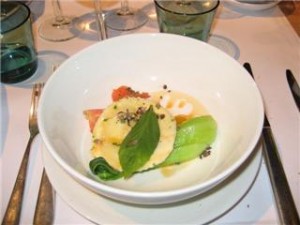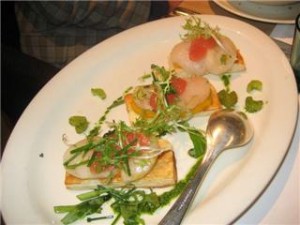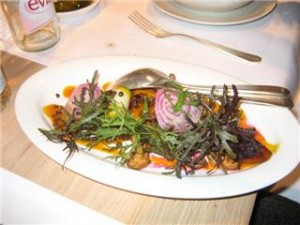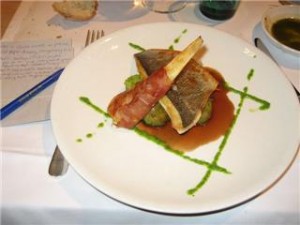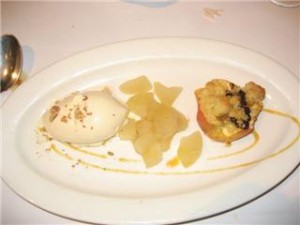In a world in which the word ‘organic’ holds the power that the Vatican does amongst Catholics, it’s easy to be a cynic, an org-nostic. Dissent comes naturally when those around you seem to agree unquestioningly with the lines they’re fed – by the shops, by the chefs, by the media. Devil’s advocate I may be (and frequently am) but I’m not sure that ‘organic’ is all that it’s cracked up to be.
My parents grow fruit and vegetables in their garden; being unequipped with greenhouses or covered, irrigated structures, their produce is largely open to the elements and, of course, the birds and insects. No doubt from time to time they spray their fruit trees with pesticide, or dig the flinty Chiltern soils with fertiliser. Even then our Christmas sprouts often yield a surprising morsel of ‘extra protein’, as my mother calls the caterpillars that besiege my father’s vegetables. She painstakingly wraps the cherry tree branches in old pairs of tights in a bid to deter the birds, who invariably take the best of the fruit before we get the chance. Are, then, my parents’ vegetables and fruit to be black-marked as ‘non-organic’? Were they ever to sell them, I expect this would be the case. And yet what better flavour, and what respect to the environment, to pull a parsnip from the winter soil, to pluck a fragrant tomato bursting from its skin, or to pop peas straight from plant to pod to plate? Organic they may not be, local they are.
I’m not sure whether Restaurant de Kas uses the O word in its blurb – I expect it probably does, given its reputation. But what’s striking is the proximity of its raw ingredients to its kitchen. What the restaurant’s gardeners don’t produce within a 100m radius of the venue arrives daily from farms neighbouring Amsterdam. It’s hardly surprising, then, that the five-course menu offers no choice to diners, as the chefs base what they cook on what is picked, plucked or pulled each day. Moreover, meat, fish, dairy and other products that are harder to source locally, simply feature very little on the menu. To my mind, a set menu has other benefits too. I am often disturbed by the weight of the book with which I’m presented at some restaurants, on the grounds that I’d rather a chef concentrates on making five dishes well than fifty badly. How can they even guarantee the freshness of the ingredients? It follows, then, that the fewer the dishes, the higher the quality. Well, that’s the theory anyway.

